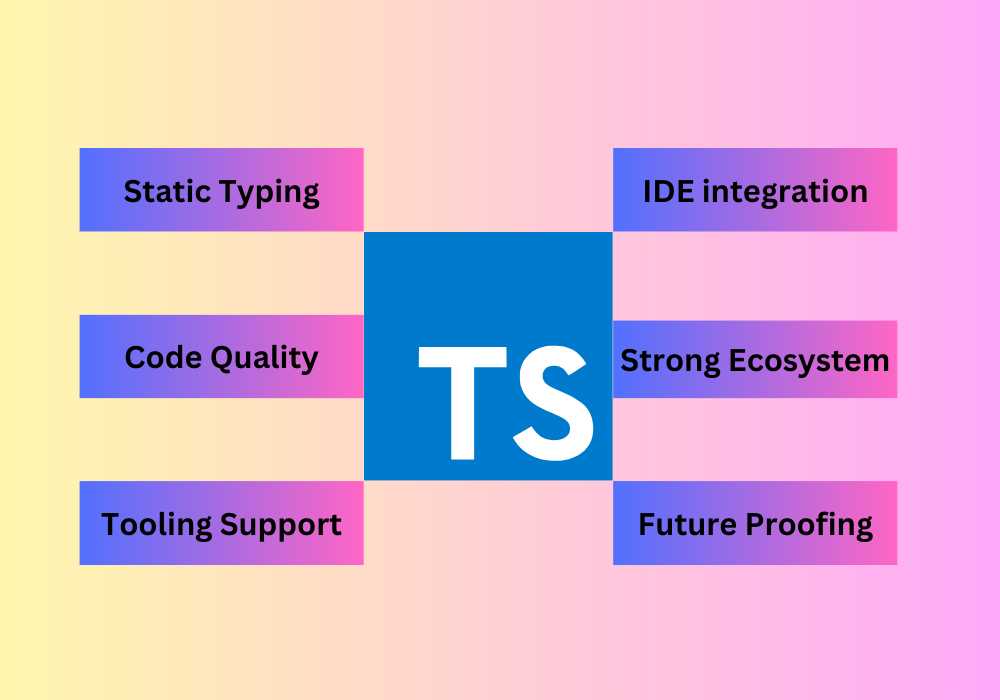TypeScript is changing the way developers build web applications. As a superset of JavaScript, it brings advanced features like static typing, which makes coding less error-prone and more efficient. These features help developers write cleaner, safer, and more maintainable code, especially as projects grow in complexity.
The advantages of TypeScript are evident for web developers. Its ability to catch errors during coding saves time and reduces debugging efforts. Moreover, with its seamless integration with popular frameworks like Angular, React, and Vue.js, TypeScript has become a go-to tool for building scalable, high-performance web applications.
Why TypeScript is Essential for Web Development

TypeScript has become one of the most popular tools for building web applications today. It is a programming language that enhances JavaScript by adding features like static typing. These features make coding safer and more efficient, especially when working on large projects. Developers love TypeScript because it helps them write code that is cleaner, easier to debug, and better structured.
For web developers, TypeScript saves time and reduces errors. Its ability to catch mistakes while writing code is a huge benefit. This feature means fewer bugs appear when the code is run. As web development becomes more advanced, tools like TypeScript are becoming essential for creating high-quality applications.
What Makes TypeScript Stand Out?
TypeScript stands out because it improves JavaScript without making it harder to use. It allows developers to define the types of variables, functions, and other code elements. This feature helps catch common mistakes before they cause bigger issues in the program.
When developers use TypeScript, they can manage their code better. It simplifies collaboration on large projects by ensuring everyone follows the same coding standards. Additionally, TypeScript integrates smoothly with popular frameworks like React, Angular, and Vue.js, making it the perfect choice for modern web development.
Key Benefits of Using TypeScript for Developers

TypeScript offers several benefits that developers appreciate. Here are some of its most useful features:
- Static Typing: With static typing, developers can define types for variables and functions, reducing errors.
- Improved Debugging: By catching errors early, TypeScript saves time spent on fixing bugs.
- Easier Maintenance: TypeScript ensures the code remains readable and maintainable, even as projects grow larger.
These benefits make TypeScript a powerful tool for creating efficient, scalable web applications.
How to Get Started with TypeScript
If you’re new to TypeScript, starting is simple. First, you need to install TypeScript on your computer. You can do this using the following command in your terminal:
bash
Copy code
npm install -g typescript
Once installed, create a new file with a .ts extension and begin writing TypeScript code. Start by experimenting with small programs, adding type annotations to variables and functions. Practice regularly, and you’ll soon see how TypeScript improves your workflow.
Challenges with TypeScript and Tips to Overcome Them
Common Challenges Developers Face
- Assigning incorrect types to variables
- Misconfiguring the TypeScript environment
- Forgetting to use type annotations for functions
How to Avoid These Issues
- Double-check your types: Always confirm that variable types are correct.
- Set up tsconfig properly: Use a TypeScript configuration file to define project settings.
- Follow documentation: Use TypeScript’s official guides for best practices.
By addressing these challenges, you can make the most of TypeScript in your projects.
Conclusion: The Role of TypeScript in Modern Web Development
TypeScript is transforming how web developers write code. Its ability to reduce errors and enhance collaboration makes it an invaluable tool for building better applications. Whether you’re a beginner or an experienced developer, learning TypeScript can improve your skills and help you create scalable projects.
With its growing popularity and strong community support, TypeScript is here to stay. By adopting TypeScript in your work, you’ll benefit from cleaner, more reliable code that meets the demands of today’s web development.









